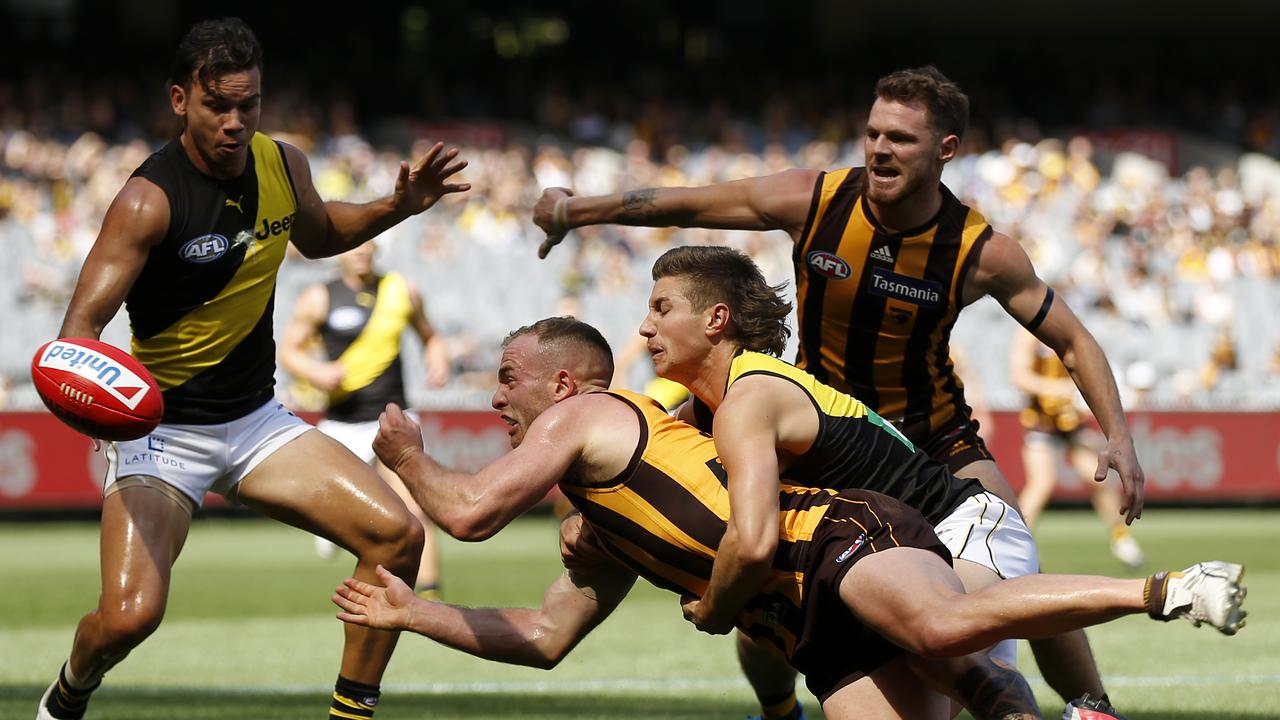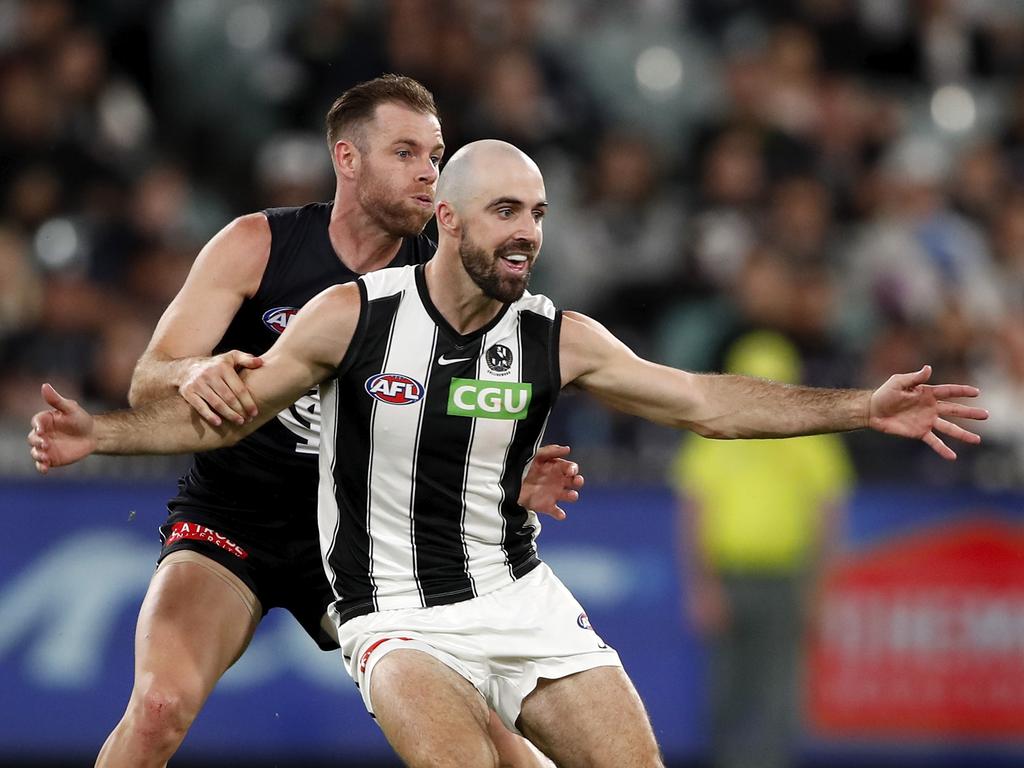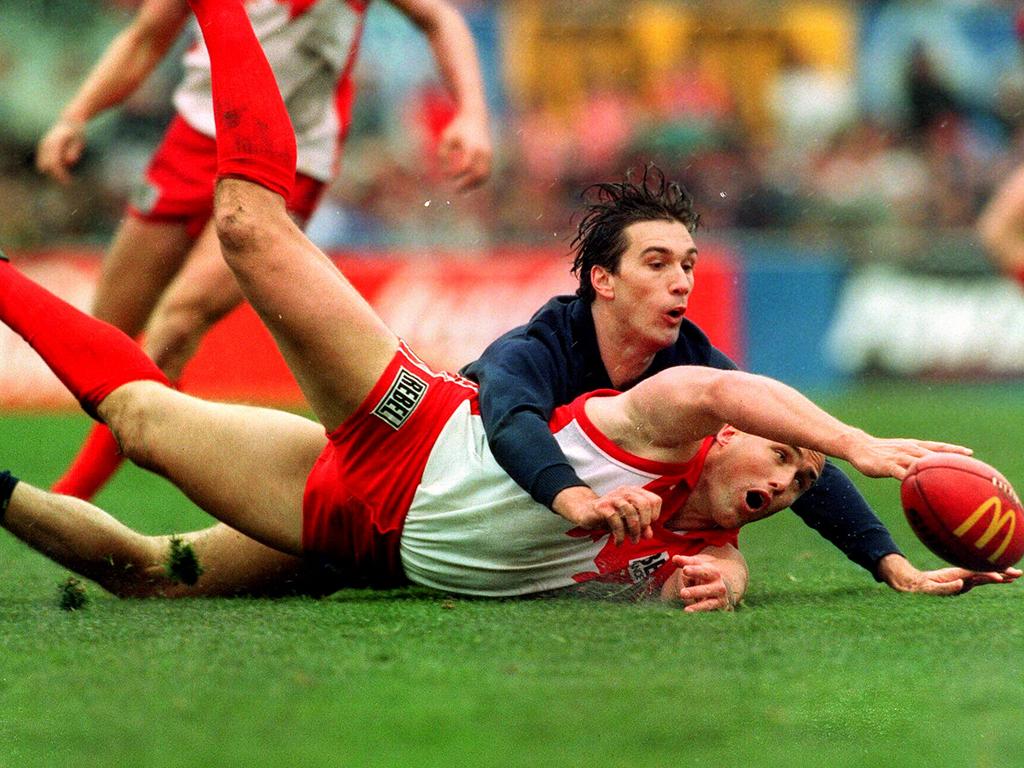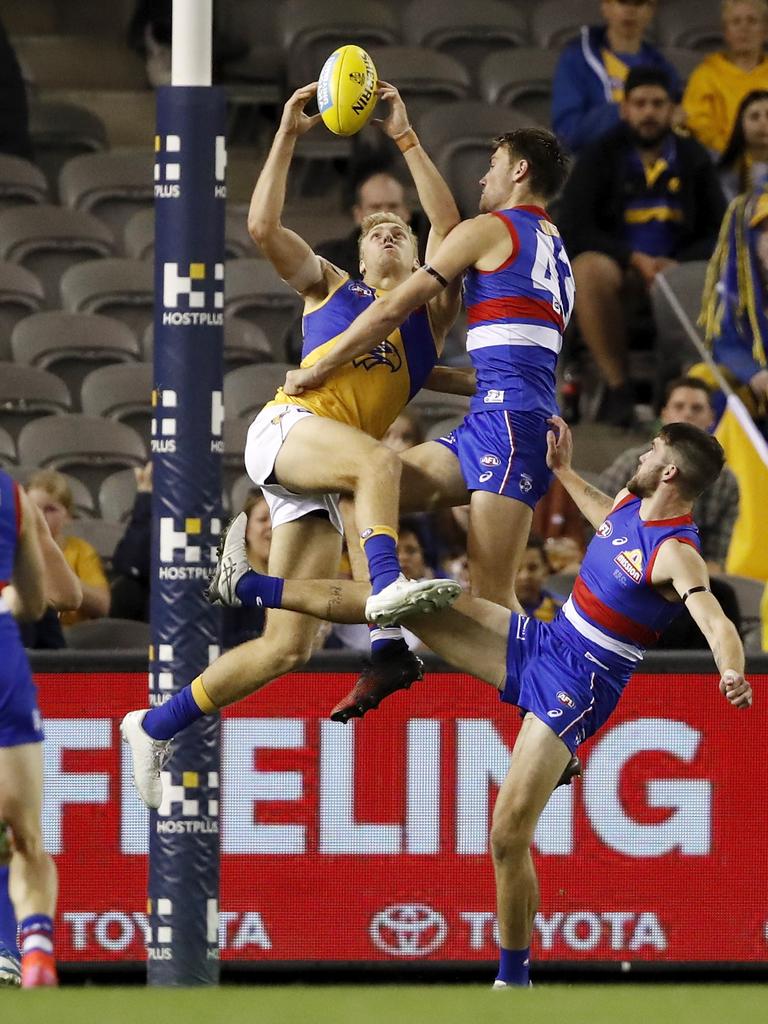Mick Malthouse: Art of defence in danger of being eroded from AFL history
Body pressure in the backline remains a basic fundamental of the game, yet with the highball it’s quickly disappearing and teams are paying a heavy price, writes Mick Malthouse.

AFL
Don't miss out on the headlines from AFL. Followed categories will be added to My News.
Defence is a true art.
Don’t dismiss defence as just backline positions, defence is the art of defending the ball.
Yes, I’ve been called a dinosaur by some, too defensive by others, and our game has changed in more recent years. But the fundamentals of all team sports are the same.
To be in front at the final stage regardless of what happens between the start and the end, is the objective of any sport.
I fear though that the basic fundamentals of AFL football are being lost or eroded as time goes on.
Watch the 2021 Toyota AFL Premiership Season. Every match of every round Live on Kayo. New to Kayo? Try 14-Days Free Now >
Let’s look at the backline first.
You cannot share the ball with your opponent as a backline player. It is a prerequisite as a defender that you have the physical ability to be able to win a one-on-one contest.
Clearly with good delivery and sometimes the luck of the bounce you will be beaten.
But the acceptance of a highball coming in and being marked against you, to meekly defend the kick and let someone else worry about the next possession, is a trend that is as bad as the mullet.
Backline players cannot have a 50-50 result against their direct opponent — that is a thumping.

Time must be put in at training for team highball defence, body positioning and tactics for defending the lead and the one-on-one contest. These are football fundamentals.
The top teams with the best defensive players train to destroy the highball and stop it cold early in a game. Geelong, Collingwood, Port Adelaide, Richmond and West Coast all do it well.
I have watched football for a long time and in the past few seasons there has been a focus at training and in games on ball movement, running off the backline, setting up position for the miss kick, and all of those things need attention — but many of today’s backline players just don’t know how to defend a highball, nor a strong lead from a direct opponent. They fail to put body pressure on and do not take enough responsibility for their opponent.
When we look at champion backs of the past their starting point in a game was always their direct opponent. Then they worked off that opponent. Through this they matched the great full-forwards and often beat them.

Stephen Silvagni could never afford to stand off against Tony Lockett, Gary Ablett or Peter Sumich. He had to maul them — legally. Just like Bruce Doull, John Worsfold, Matthew Scarlett, Chris Johnson and Glen Jakovich did.
If I look at last year’s All-Australian backline, the one common thread is that these players back themselves against their direct opponent — Brad Sheppard, Harris Andrews, Luke Ryan, Nick Haynes, Darcy Moore and Darcy Byrne-Jones weren’t picked for their attacking flair. They were picked because of their ability to play hard, tough, unrelenting, one-on-one defence, and then came the flair.
Natural flair is incidental compared to defensive work.
But watching last year and particularly looking at the Round 2 Carlton-Collingwood match, Lachie Plowman (is not the Blues’ Robinson Crusoe) and Liam Jones to a degree, allowed their opponents (Jordan De Goey, Brody Mihocek and Mason Cox) too much room and the luxury of leading into space. It was Carlton’s downfall.
Sam Docherty, who I love as a player and who is coming off knee issues, needs to address his starting point and become a lot more physical. As co-captain he can’t go another match without a tackle. He must set a physical example for a tame Blues’ backline.
Contrast that with the way Nick Vlastuin, Dylan Grimes, Brayden Maynard, Darcy Moore, Jeremy Howe, Andrew Harris, Callum Wilkie and Jeremy McGovern transition their play from highly defensive to offensive at the right time, and you can see why these players are so hard to beat one-on-one.
Melbourne is 2-0 and already looks a different club to last year, primarily because of Steven May’s improvement in defence. He has become the premier backline player at the club and his work is allowing Jake Lever to do what he does best — intercept.
The Demons have a steadier backline with May setting a wonderful example of hard one-on-one football.
One of my favourite players to watch is Collingwood’s Maynard. He is as tough as nails and unrelenting, disciplined and team orientated. His battle with Liam Ryan each time the Magpies take on West Coast is among the season’s highlights. Give me a Maynard in my side any week.

On the flip side, Bulldog Ryan Gardner gets found out each week. Despite how hard he tries, which is commendable, he struggles to win one-on-one contests regularly enough which does not bode well for the Dogs holding out top sides on a consistent basis.
Even the more experienced Phil Davis picks and chooses when he plays tight, which has unsettled the Giants’ backline.
It is a given that the team that wins the premiership will have a very solid, accountable backline.
So now to the art of defence — across the field.
Backline players are the no-fuss department. The midfield is the engine room. The forwards are the glory hunters. But their roles shouldn’t stop any player from getting their hands dirty.
If you need any evidence of how well whole-team defence works, just watch the last two Grand finals. Richmond is a team that gets its hands dirty.
That is because there is a direct correlation with winning and aggression and losing and non-aggression. By aggression I mean tackling and tough bodywork.
In the first two rounds, the fancied sides that won had more tackles than their opponents, and the fancied sides that lost had less.
Brisbane’s Charlie Cameron, who we expect so much from, had one tackle against Sydney and didn’t score for the match. There is a direct link in a player like Cameron using his aggression to win back the ball and his scoring power.
In Geelong’s loss to Adelaide in Round 1, Luke Dahlhaus and Gary Rohan had one tackle between them. In Richmond’s win over Carlton, Jack Riewoldt had five tackles, but Blues trio Marc Murphy, Zac Fisher and Michael Gibbons had less than that collectively.
The passive way in which Carlton is currently playing (37 tackles in Round 1 and 41 in Round 2) is reflective of input and result. Instead of setting an example, former captain Murphy looks soft and the team is following suit.
With leading clubs loading up on top-quality midfielders this dinosaur also still believes heavily in the art of the tag.
Brownlow medallist Lachie Neale was destroyed by Geelong’s Mark O’Connor last weekend and the Lions lost by a point. That job was similar to Mark Hutching’s job on Steele Sidebottom in the 2018 Grand Final when the Eagles got up by less than a goal.
In the role of tagger, O’Connor has added to Geelong’s arsenal and opened the eyes of other clubs in how to restrict a player like Neale.
Some coaches allow a high-possession opposition player to take full charge, and gain confidence before trying to negate his effectiveness. By then it is generally too late. If a tag makes even just the slightest difference in providing a positive outcome, it is worth it.
There are some players in the competition, like Ed Curnow and Matt de Boer, who are not free-running ball magnets, but when given a job like a tag become extremely effective.
There are also examples of highly-credentialed mids who can sacrifice their own game to negate the best players in the opposition. Scott Pendlebury, Cameron Guthrie and Elliot Yeo have all travelled this selfless path.
Like the ceiling of the Sistine Chapel, defence is an art, and when you get it all right, it’s beautiful. A masterpiece even.
More Coverage
Originally published as Mick Malthouse: Art of defence in danger of being eroded from AFL history








